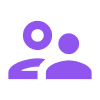In this blog, we have highlighted the importance of a job description, provided an overview of the key elements in a job description, and explained the difference between a job description and a job profile. To create successful job descriptions, it is critical to use clear and concise language, specify the skills and qualifications required, and consider inclusiveness and diversity. With these best practices, you can create job descriptions that not only help attract suitable candidates, but also contribute to an effective recruitment and selection process within your organization.
What is a job description?
A job description is a concise document that describes the duties, responsibilities and required skills of a specific job within an organization. Its purpose is to provide clarity about what is expected of an employee and provide direction for their performance. An effective job description provides insight into the employee’s role, assists in recruitment and selection, supports performance appraisals and promotes a better understanding of job level and career progression within the company.
How is a job description structured?
A job description is usually composed of several parts that together give a complete picture of the job. Although the specific classification may vary depending on the organization, a typical job description usually includes the following elements:
- Job title: The name of the position, such as “HR Manager” or “Software Engineer.”
- Job Description: A concise introduction summarizing the essence of the position.
- Duties and Responsibilities: A listing of daily tasks, projects and responsibilities associated with the position.
- Required Skills: A list of the competencies, qualifications and experience required to successfully perform the job.
- Reporting structure: information on who reports the employee and who reports to them.
- Work Environment: A description of working conditions, such as working hours, physical demands and any special circumstances.
- Advancement Opportunities: Possible opportunities for career development and growth within the organization.
- Salary and benefits: Optional indication of salary and fringe benefits may also be included.
How does a job description differ from a job profile?
We just briefly discussed the design of a job description. We only see in practice that the term “job description” and “job profile” are often confused. But what exactly is the difference?
A job description is a document that describes the duties, responsibilities and required skills of a specific job within an organization. It provides insight into the employee’s daily tasks, his/her role in the organization and performance expectations. A job description is often used in hiring, performance evaluations and career development.
A job profile is broader and includes not only the specific job, but also the competencies and personal attributes needed to perform the job successfully. It describes the qualifications, experience, skills and behavioral characteristics that an ideal candidate should have. A job profile is used as the basis for the selection process because it helps assess candidates and find the best match for the position.
In short, a job description focuses on the duties and responsibilities of the position, while a job profile provides a broader description of the requirements and personal attributes necessary for success in that position.
What are the best practices for creating a job description?
Would you also like to get started creating appropriate job descriptions for your organization? Then don’t forget to consider these best practices.
- Clear and concise language: Make sure the job description is clear and understandable. Use plain language and avoid jargon or unnecessary technical jargon. Keep the description concise, but make sure all essential duties and responsibilities are mentioned.
- Specify required skills and qualifications: Clearly state the required skills, education levels and work experience needed to successfully perform the job. This helps potential candidates understand whether they are right for the position and allows the organization to recruit in a more targeted way.
- Inclusiveness and diversity: Strive for job descriptions that are inclusive and promote diversity. Avoid including unnecessary criteria that may exclude certain groups of candidates. Focus instead on the essential job requirements and the potential for growth and development within the role.
Save time with automated job descriptions in Learned
With the Learned platform, you don’t have to reinvent the wheel to create all your own job descriptions. With the power of AI, you can automatically retrieve job descriptions for your most important positions in the Learned platform. Tested and validated against similar companies in your industry.




























